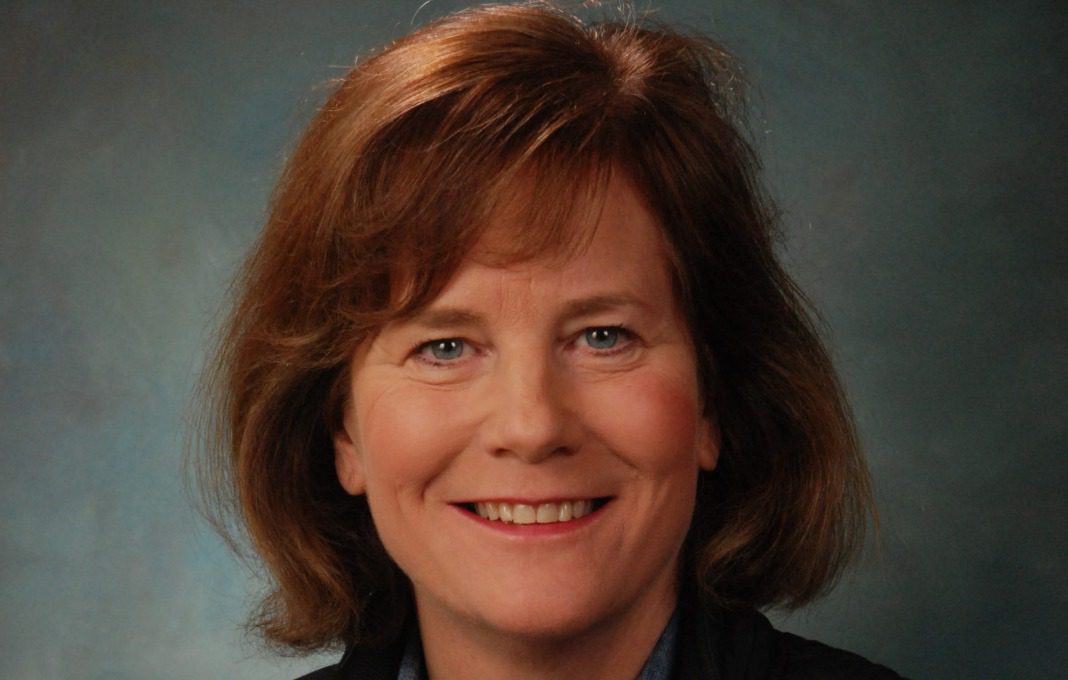Carhartt President Leans Into Company’s Attributes for Growth


Linda Hubbard is president of Dearborn, Michigan-based Carhartt, and she’s orchestrating a growth story despite having to adjust to high inflation, continued supply-chain crimps and the scarcity of labor in the mid-South where the company’s two manufacturing plants soon will have lots more competition for workers from burgeoning factory investments in Kentucky and Tennessee by electric-vehicle makers and others.
Hubbard also enjoys helping translate Carhartt’s care for its primary constituency—working-class Americans who wear employee uniforms for their companies, specialized clothing for skilled trades, outdoor apparel for their jobs and leisure pursuits, or a combination—into marketing exercises like her recent foray to Sleeping Bear Dunes National Lakeshore in northwest Michigan, on the shore of Lake Michigan.
The company worked with the National Parks Foundation to highlight its commitment to public lands and the outdoor workforce that maintains their safety and beauty. Carhartt also worked with its partner, Services Corps, to provide summer jobs for an organization called YouthWork that, in Michigan, provides project work for teenagers, many of whom hail from inner-city Detroit.
“Our products are well suited to people who work outdoors and on maintenance projects,” Hubbard told Chief Executive. “In hot weather our t-shirts wick away sweat, for instance, and we have gloves, shorts and more. In our rainwear, workers can have a job whether it’s nice out or not.”
Here are some ideas for other chiefs from how Hubbard is handling Carhartt’s current challenges and opportunities:
Hubbard said that Carhartt “has seen costs going up around the world just like everyone else, and especially significant cost increase in the transportation area, around moving products into distribution centers and shipping out to customers. And our retailers have seen the same pressures.”
Carhartt’s approach in raising prices to reflect these cost increases, Hubbard said, is to emphasize the value the brand brings to retailers and consumers. “We absolutely understand that we have to answer to a value equation for someone who has only a certain amount of discretionary income to buy apparel,” she said. “So, part of our value equation is that ours last longer and is more durable. We’re helping people see value behind buying Carhartt and continue to win, once people have to make decisions with their dollars.”
Carhartt has suffered “less impact than many other [apparel] brands” from Asia-centric supply problems, she said, in large party because “a big portion of our production is situated in the western hemisphere.
“Although everyone was constrained on product availability during the pandemic, we had quite a bit of core product to buy, and that was a positive for us, as well as the fact that we were sold at essential retailers” because Carhartt supplies a lot of clothing for work that must be done in person. “We’ve continued to maintain that supply-chain advantage which allows us quicker throughput to get products here, and fewer logistical challenges.”
Carhartt’s unionized force of about 1,000 manufacturing workers includes many who are highly skilled, some nearly artisanal, in being able to sew a variety of complex garments, many of them occupational, out of a variety of materials.
“Our machines are uniquely designed for different sewing operations, but they’re still very labor-intensive [processes], though people have tried” to automate them, Hubbard said. “Knitted things like socks are very automation-friendly, but to assemble garments still requires lots of human skill.”
However, Hubbard said, Carhartt is increasingly automating its distribution operations. This includes installing more conveyors “so we can move products to people who pick the product to pack it to go out, versus walking eight to 10 miles a day” to retrieve goods for shipment. Investments also are rising in automation to load and unload trucks.
“The company has been growing so quickly, automation really isn’t replacing any employees, but it allows us to keep up with our accelerated growth,” she said.
Carhartt has “been able to retain a lot of people with long tenure,” Hubbard said. “We’ve been very fortunate in that we haven’t had a huge challenge to try to replace people who’ve left for other opportunities. People feel connected and proud to work for the brand, and so they’re staying engaged.”


0

1:00 - 5:00 pm
Over 70% of Executives Surveyed Agree: Many Strategic Planning Efforts Lack Systematic Approach Tips for Enhancing Your Strategic Planning Process
Executives expressed frustration with their current strategic planning process. Issues include:
Steve Rutan and Denise Harrison have put together an afternoon workshop that will provide the tools you need to address these concerns. They have worked with hundreds of executives to develop a systematic approach that will enable your team to make better decisions during strategic planning. Steve and Denise will walk you through exercises for prioritizing your lists and steps that will reset and reinvigorate your process. This will be a hands-on workshop that will enable you to think about your business as you use the tools that are being presented. If you are ready for a Strategic Planning tune-up, select this workshop in your registration form. The additional fee of $695 will be added to your total.

2:00 - 5:00 pm
Female leaders face the same issues all leaders do, but they often face additional challenges too. In this peer session, we will facilitate a discussion of best practices and how to overcome common barriers to help women leaders be more effective within and outside their organizations.
Limited space available.

10:30 - 5:00 pm
General’s Retreat at Hermitage Golf Course
Sponsored by UBS
General’s Retreat, built in 1986 with architect Gary Roger Baird, has been voted the “Best Golf Course in Nashville” and is a “must play” when visiting the Nashville, Tennessee area. With the beautiful setting along the Cumberland River, golfers of all capabilities will thoroughly enjoy the golf, scenery and hospitality.
The golf outing fee includes transportation to and from the hotel, greens/cart fees, use of practice facilities, and boxed lunch. The bus will leave the hotel at 10:30 am for a noon shotgun start and return to the hotel after the cocktail reception following the completion of the round.